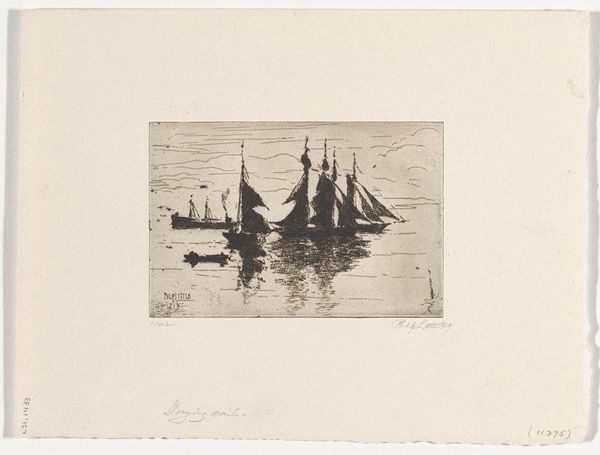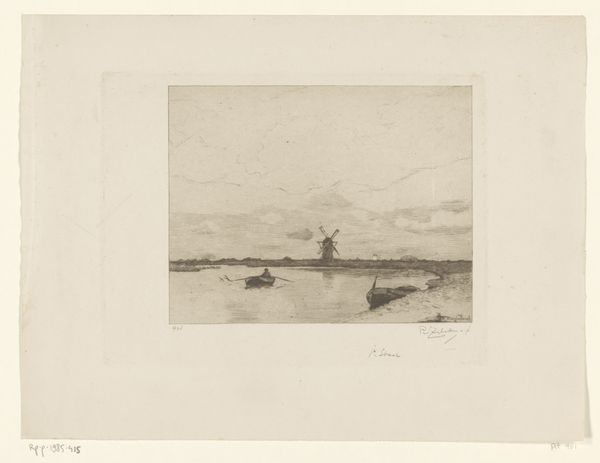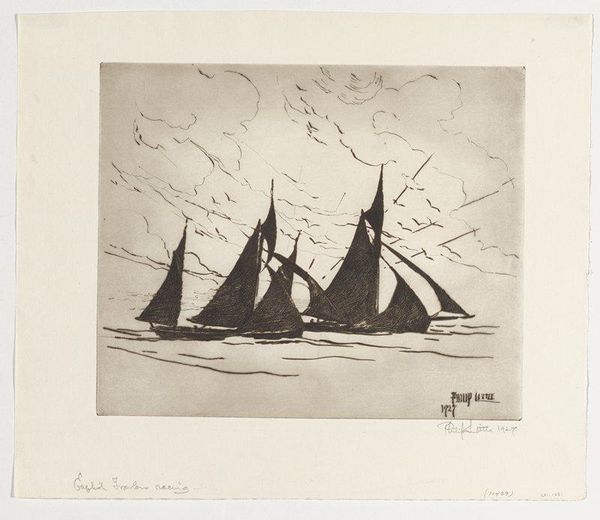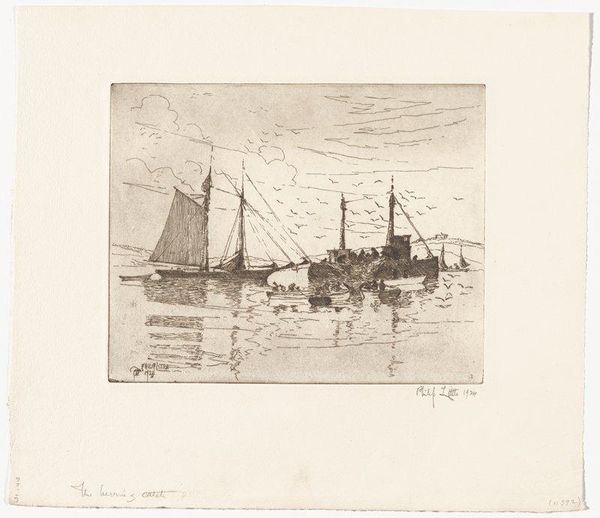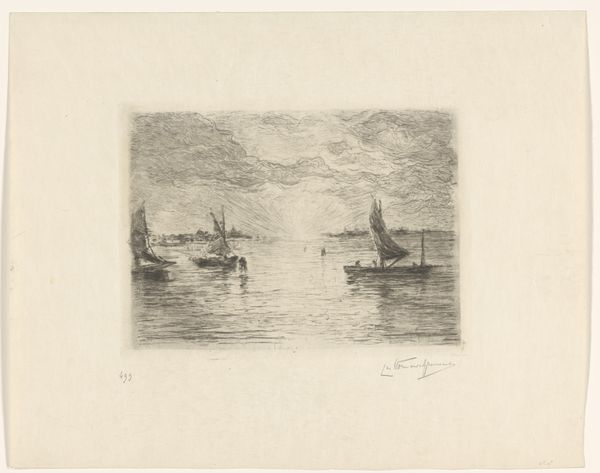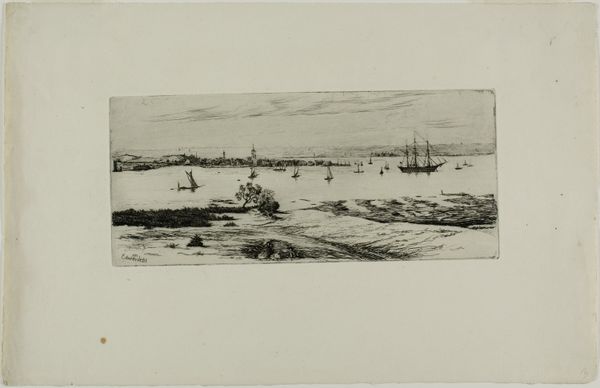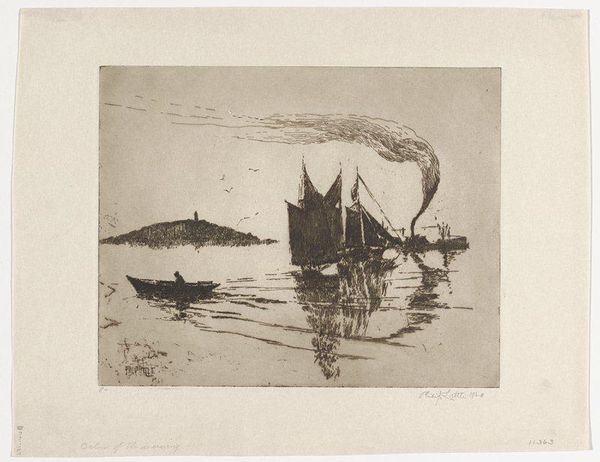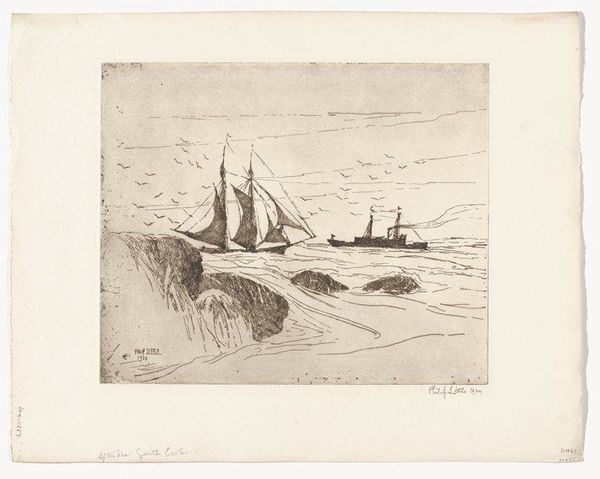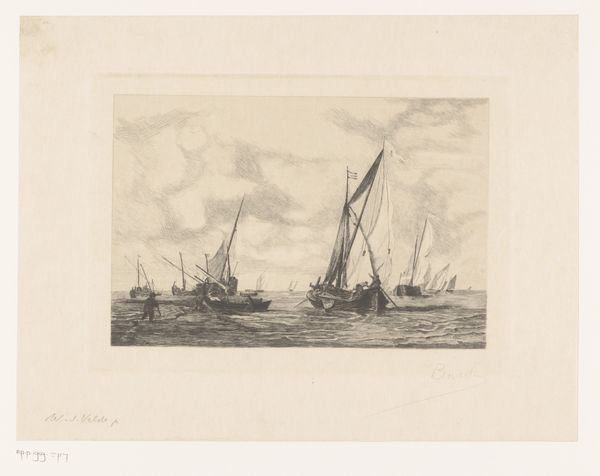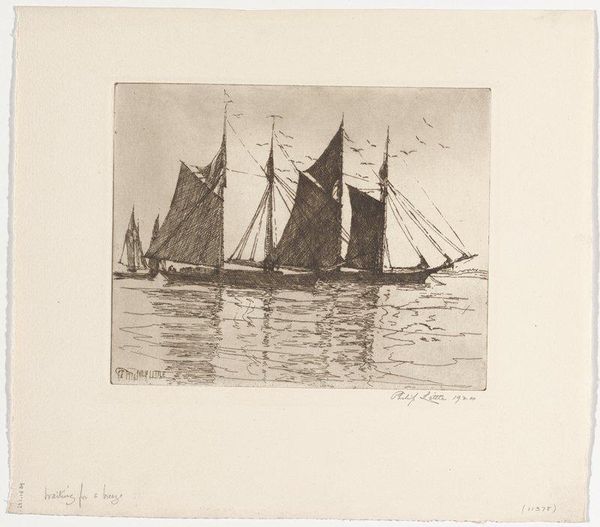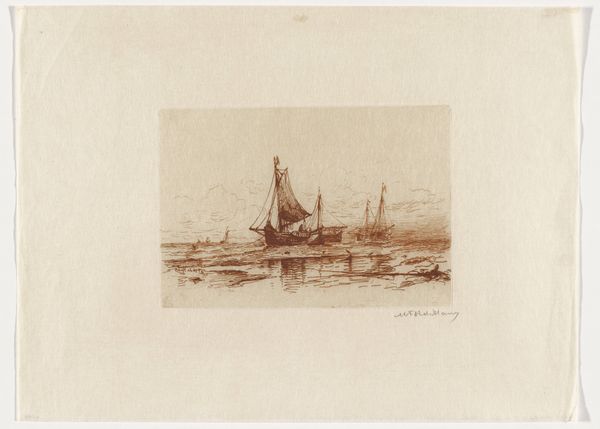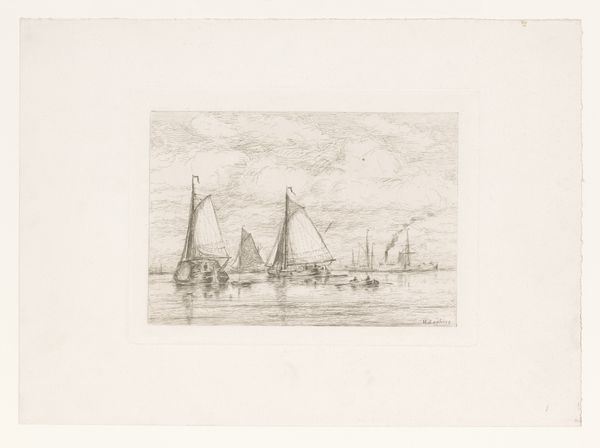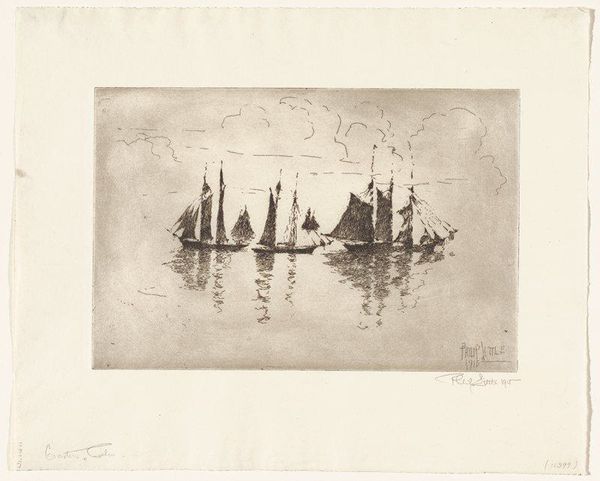
print, etching
# print
#
etching
#
landscape
#
etching
#
united-states
#
line
#
realism
Dimensions: 7 13/16 x 9 15/16 in. (19.84 x 25.24 cm) (plate)13 1/4 x 15 1/8 in. (33.66 x 38.42 cm) (sheet)
Copyright: No Copyright - United States
Editor: Philip Little’s “A Quiet August Morning,” created in 1925 using etching, presents a tranquil seascape. I’m immediately drawn to the contrast between the stillness of the water and the active scene in the sky with the steam trails. How would you interpret this depiction of a seemingly peaceful maritime scene within its historical context? Curator: The image evokes a moment of serene beauty, but it also hints at significant socio-economic shifts happening in the 1920s. The presence of both sailing vessels and a steam-powered boat illustrates a transition in maritime technology. What impact did that industrial change have on local culture and social class? Editor: Well, I imagine the transition impacted traditional fishing communities and maritime laborers. Newer technologies often led to job displacement but greater efficiency and wealth. Is that fair? Curator: Precisely! Consider how images like this played a role in shaping public perception. Artists in the early 20th century navigated a complex terrain, often commissioned to portray the virtues of progress while also catering to an audience nostalgic for a pre-industrial past. Where do you think this piece lands in that spectrum of representations? Editor: I think it is leaning more into that idyllic scene; I almost missed the steamboat at first glance. Curator: True, the focus on composition emphasizes an ethereal calm. But those wisps of smoke can also remind us of the encroaching industrial era, influencing artistic patronage and cultural values in ways both celebrated and lamented. This work gives an intriguing insight into cultural and societal attitudes toward that progress during this historical moment. Editor: I never considered how those industrial signals changed patronage, interesting food for thought. Thanks! Curator: My pleasure; analyzing art in relation to the forces of public consumption always enhances one's perspective.
Comments
No comments
Be the first to comment and join the conversation on the ultimate creative platform.
